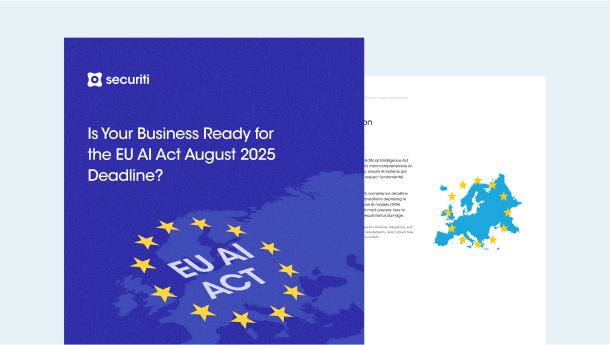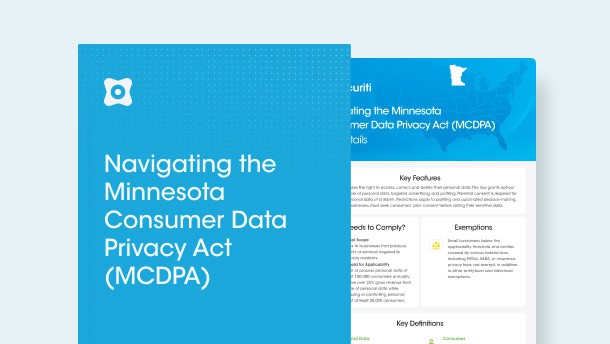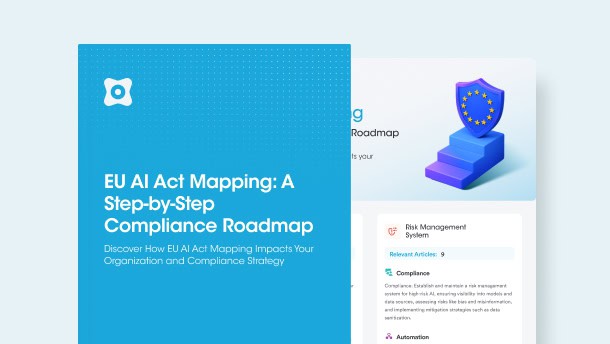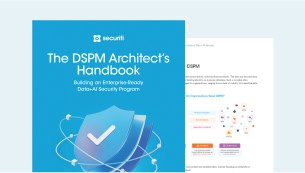In the rapidly evolving AI landscape, leveraging AI to maximize its potential has become a core component of businesses. With the AI market projected to reach a staggering $407 billion by 2027, more and more businesses are going to jump on the bandwagon to leverage AI’s potential, necessitating the urgent need for robust AI governance and risk management frameworks.
The National Institute of Standards and Technology's AI Risk Management Framework (NIST AI RMF 1.0)is considered to be the most widely known and best industry standard for AI risk management. The NIST AI RMF refers to an AI system as an engineered or machine-based system that can, for a given set of objectives, generate outputs such as predictions, recommendations, or decisions influencing real or virtual environments. This framework is designed to equip organizations and individuals with approaches that increase the trustworthiness of AI systems and help promote the responsible design, development, deployment, and use of AI systems.
The Imperative Need for NIST AI RMF
Leveraging the NIST AI RMF reduces AI risks as it ensures the ethical and secure implementation of AI systems, thereby reducing the likelihood of negative impacts for both organizations and society at large. By fostering trust and compliance with evolving regulations, NIST AI RMF not only fortifies operational resilience but also serves as an indispensable instrument for businesses striving to prosper in today's technology-centric market.
Designed in tandem with other AI risk management initiatives, NIST AI RMF is versatile and serves businesses of all sizes in a range of industries. It consists of two main components: Core and Profiles.
The Core details a set of activities and outcomes for managing AI risk across four functions: Govern, Map, Measure, and Manage. Each function is further divided into categories and subcategories that ensure the overall responsible and ethical use of AI. It’s crucial to conduct core tasks in a manner that takes into account a variety of disciplinary and multifaceted perspectives.
On the other hand, Profiles are customized choices of Core outcomes that represent the standards, values, objectives, and risk tolerance of a business. Profiles may be used to set goals or a starting point for managing AI risk. Additionally, Profiles may be used to compare and communicate AI risk management practices within or across organizations.
In essence, implementing NIST AI RMF involves gaining a sound understanding of its core principles, frameworks, and requirements for ethical and secure AI deployment. This Framework also outlines seven characteristics of trustworthy AI and offers guidance for addressing them. These include valid and reliable, safe, secure, resilient, accountable and transparent, explainable and interpretable, privacy-enhanced, and fair with harmful bias managed.
Best Practices of NIST AI RMF
Here are the strategic advantages of implementing NIST AI RMF:
Enhancing Compliance and Governance
The NIST AI RMF meticulously aligns with global AI regulatory requirements by providing a structured approach that enhances governance and accountability when deploying AI systems. Leveraging the framework enables businesses to significantly minimize exposure to legal issues and ensure conformity to international compliance requirements. This alignment enables businesses to become more reputable and trustworthy in the global marketplace by streamlining regulatory procedures and reaffirming their commitment to using AI ethically.
Building Trust with Stakeholders
Transparency is key to sustainable relationships, and this is all the more important when dealing with AI as it enables stakeholders to understand better and have confidence in the choices made by AI systems.
The NIST AI RMF is designed to provide transparent and accountable procedures, ensuring that responsibilities are clearly defined and traceable. This will boost stakeholder engagement and confidence in the business, which further fosters a trustworthy environment conducive to business growth.
Fostering Innovation While Managing Risks
Harnessing the potential of emerging AI technologies without sacrificing safety requires striking a balance between innovation and risk management. The NIST AI Risk Management Framework robustly supports this balance, making it easier to explore and use cutting-edge AI technologies safely.
Notable businesses across the tech industry are leveraging the NIST AI RMF, including tech behemoths such as Google and IBM, that have effectively incorporated state-of-the-art AI technology into their operations while rigorously following risk management guidelines found in the NIST AI RMF. This commitment establishes an industry standard of ethical AI usage that other organizations intend to imitate while also mitigating possible risks and fostering sustainable innovation.
Improving Business Resilience
In a hypervolume, data-driven digital age, resilience is essential for businesses to prosper in the face of uncertainty and disruptions. By providing comprehensive guidance for efficiently managing and reducing risks, the NIST AI RMF empowers businesses to tackle AI-related difficulties.
By adopting the NIST AI RMF’s systematic approach, businesses can strategically become more resilient over the long run, bounce back from losses, retain a competitive edge, ensure business continuity, uphold reputation, capitalize on emerging opportunities, and successfully navigate hurdles.
Competitive Advantage in the Marketplace
In a hyper-competitive digital era, survival of the fittest means organizations need to rapidly innovate while effectively managing risks to gain a competitive edge and demonstrate commitment to ethical AI use. Businesses that demonstrate such commitment not only differentiate themselves from their rivals but also welcome more socially aware investors and strategic partners.
Adherence to the NIST AI RMF reassures stakeholders of the company's dedication to responsible practices, attracting investment and fostering collaborations that prioritize transparency, accountability, and sustainability in AI deployments. This strategic positioning can drive market leadership and foster trust across all business relationships.
Steps to Implement NIST AI RMF in Your Business
Implementing the NIST AI RMF involves understanding its core components and integrating them into your business processes. Key strategies for successful implementation include conducting comprehensive risk assessments, establishing AI governance goals, identifying AI systems, categorizing AI into risk levels, adopting risk management strategies, regularly testing and validating AI systems, documenting the entire process, and fostering a culture of continuous improvement.
How Securiti Can Help
Securiti’s Data Command Center enables organizations to comply with the NIST AI RMF by securing the organization’s data, enabling organizations to maximize data value, and fulfilling an organization’s obligations around data security, data privacy, data governance, and compliance.
Organizations can overcome hyperscale data environment challenges by delivering unified intelligence and controls for data across public clouds, data clouds, and SaaS, enabling organizations to swiftly comply with privacy, security, governance, and compliance requirements.
Request a demo to witness Securiti in action.








































